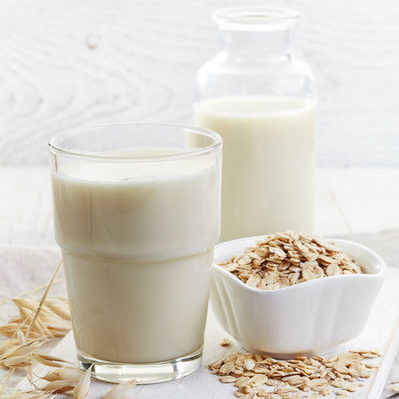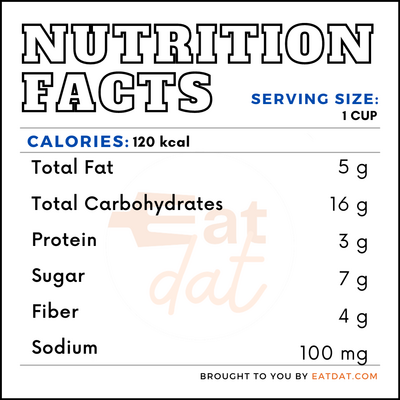
Oat Milk
What is Oat Milk?
Oat milk is a plant-based beverage that comes from extracting plant material from whole oats. While this milk is very popular with vegans, it’s also a healthy milk alternative that is quite eco-friendly. This drink is available in different flavors:
- unsweetened
- sweetened
- vanilla
- chocolate
This milk has a rapidly growing market that is estimated to reach $490 million by 2026. In the United States, sales increased by 686% in 2019.
The top brands, according to Refinery29 are:
- Califia Farms Oat Barista Blend
- Oatly – Barista Edition
- Califia Farms Unsweetened
- Pacific Foods Organic Oat Beverage
- Oatly – Original
- Silk Oat Yeah – Plain
- Elmhurst Milked Oats – Barista Edition
- Elmhurst Milked Oats
- Silk Oat Yeah – Vanilla
- Silk Oat Yeah – Chocolate
Origin of oat milk
Swedish food scientist Rick Öste is responsible for inventing oat milk in the 1990s. He was studying oats because of their sustainability and found a way to break them down with water and enzymes. By 1994, Öste started the company Oatly and started selling this plant-based milk commercially. Later in 1996, Pacific Foods, the first North American producer of this drink, also began selling this milk.
While it took some time, by 2013 nearly half of all Americans were consuming plant-based milk. The plant-based milk market took off in part because of diet culture, but also because of growing concern about consuming cow’s milk. Around the fall of 2016, this beverage had become so well-known that many were beginning to make their own at home. As of 2018, plant-based beverages had a $9.8 billion market which has only continued to grow in recent years.
Nutrition
This milk offers fiber and lots of plant-based protein which makes it a healthy alternative to milk. One cup of oat meal contains:

This beverage also has plenty of vitamins and minerals, such as Vitamin A, Vitamin B12, Vitamin D, Riboflavin, Calcium, Potassium, Iron and Magnesium. Studies have shown that this milk can reduce cholesterol which also helps reduce the risk of heart disease. It has even been linked to improved digestive and gut health. A cup of this beverage can have 90-120 calories, 15-20g of carbohydrates, and 2g of protein.
Function
Much like milk from cows, this creamy plant-based beverage helps provide flavor and texture to a variety of dishes. You can use unsweetened oat milk to thicken soups and stews or give a creamy texture to Mac and Cheese. This plant-based milk also works well when baking cakes or muffins and making pancakes. Oat milk is even tasty to drink on its own, in protein shakes, or eat with cereal.
Commercial production
The commercial production begins with milling the oats with water then adding enzymes to them to break down the starch. After that, the bran is separated to leave behind only small, loose fibers. Depending on the recipe, sweeteners or other flavorings are added, as well as other ingredients to stabilize the milk. The beverage is then sterilized before it’s packaged and stored until ready to be sold.
Uses
This milk can give great texture and flavor to anything from cakes to soups. However, to ensure maximum enjoyment of this beverage, it’s best to store it properly. Store-bought oat milk can be kept at room temperature until opened. After it’s opened it should be stored in the refrigerator and consumed within one week. It’s also important to adhere to the ‘best by’ date printed on the carton.
Oat milk recipes
This creamy plant-based milk is healthy and versatile. Here are some popular recipes.
- Homemade oat milk
- Chocolate oak milk
- Vegan mac and cheese
- Vegan vanilla cake
- Vegan cream of mushroom soup
FDA Regulation
The Food & Drug Administration is very strict when it comes to labeling foods, especially processed beverages. Companies that produce this must comply with the labeling regulations concerning sugar. The FDA requires that all added sugars be noted on a product’s packaging even if they are from the processing phase. Commercial producers of this plant-based beverage must then label the sugars used in their oat base as added sugars.
References
Deitz, Bibi. “Is Oatly Really the Holy Grail of Alt-Milk?” Coveteur.com, Coveteur, 21 Aug. 2019, coveteur.com/2019/08/21/history-of-oatly-oat-milk-popularity/.
Wertheim, Bonnie. “The Humble Ascent of Oat Milk.” Nytimes.com, The New York Times, 19 Jan. 2018, www.nytimes.com/2018/01/19/style/oat-milk-coffee-oatly.html.
London, Jaclyn. “Everyone on Instagram Is Obsessed With Oat Milk, But Is It Actually Good for You?” Goodhousekeeping.com, Good Housekeeping, 11 Apr. 2019, www.goodhousekeeping.com/health/diet-nutrition/a27079365/oat-milk-nutrition/.
“Guidance for Industry: Nutrition and Supplement Facts Labels Questions and Answers Related to the Compliance Date, Added Sugars, and Declaration of Quantitative Amounts of Vitamins and Minerals.” U.S. Food and Drug Administration, FDA, 1 Dec. 2019, www.fda.gov/regulatory-information/search-fda-guidance-documents/guidance-industry-nutrition-and-supplement-facts-labels-questions-and-answers-related-compliance.
